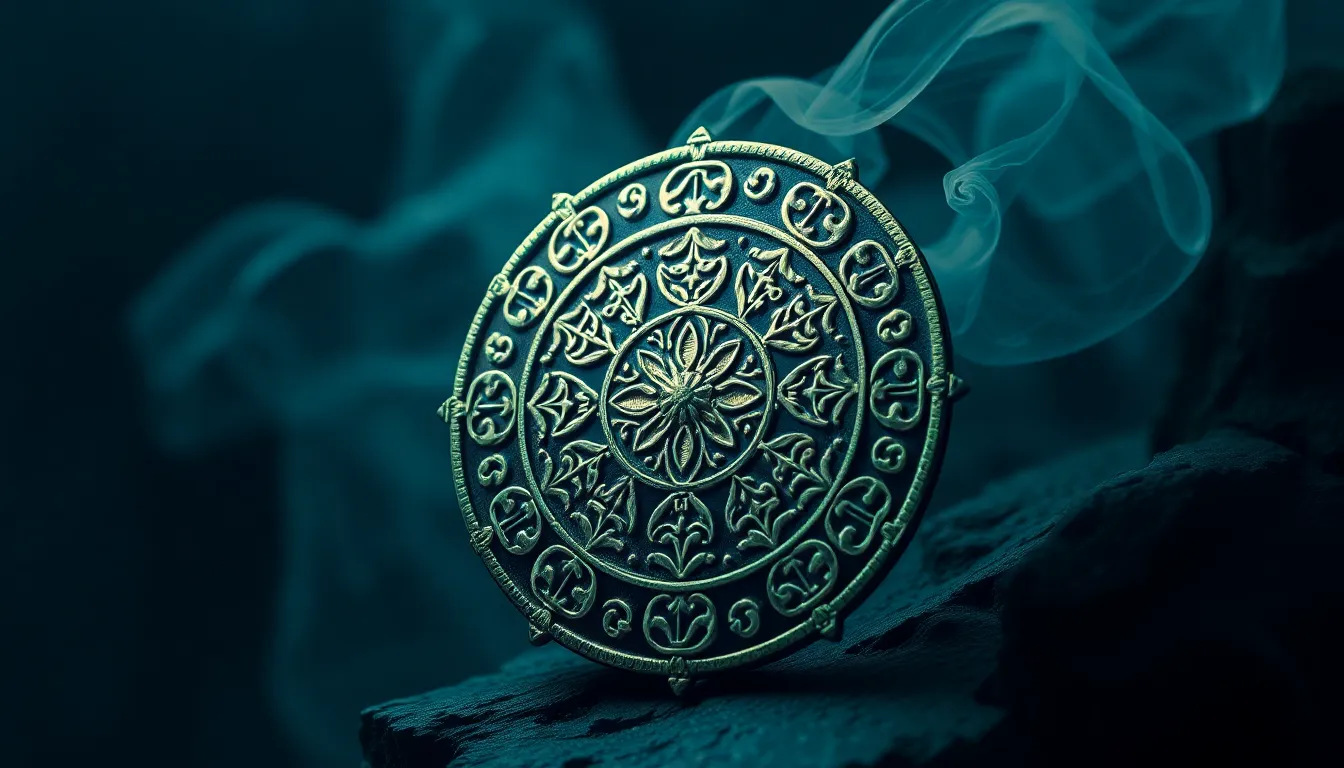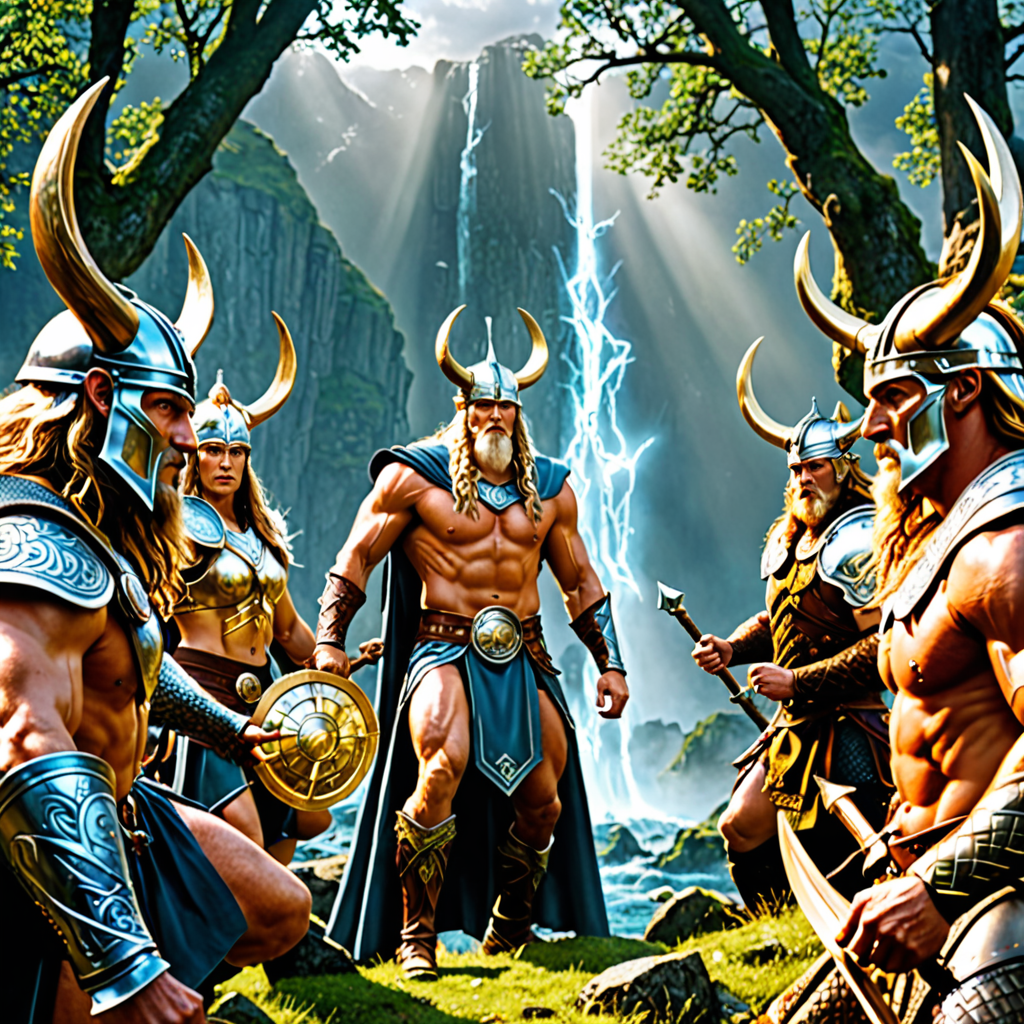The Enchanted Isle of Avalon: The Legend of King Arthur’s Retreat
I. Introduction
Avalon, often referred to as the mystical isle in Arthurian legend, has captured the imaginations of many throughout the ages. This enchanted place is steeped in magic and mystery, serving as a significant backdrop to the story of King Arthur, one of the most enduring figures in British folklore.
The importance of Avalon lies not only in its connection to Arthur’s tale but also in its representation of healing, transformation, and the supernatural. This article aims to explore the rich mythology surrounding Avalon, its historical context, and its lasting significance in both literature and culture.
II. Historical Context of Avalon
The legend of Avalon has its roots deeply embedded in Celtic mythology, where the idea of otherworldly islands was common. Ancient texts and folklore depict Avalon as a place of abundance and eternal youth, echoing the reverence of nature in Celtic beliefs.
Geographically, Avalon is often linked to ancient British history, particularly in the southwest of England. The isle has been associated with Glastonbury, where the myths suggest that Arthur was buried. This connection to a real location has fueled both historical and mythical interpretations of Avalon.
In early medieval literature, Avalon plays a pivotal role in the narratives surrounding Arthurian legends. The earliest mentions of the isle emerged in texts such as Geoffrey of Monmouth’s *Historia Regum Britanniae*, where Avalon is described as Arthur’s final resting place and a realm of magic.
III. The Mythical Geography of Avalon
Avalon is often depicted as a mystical island, shrouded in mist and filled with lush landscapes. It represents a realm that transcends the ordinary world, embodying themes of enchantment and spiritual refuge.
- **Glastonbury Tor**: Many believe this hill is the entrance to Avalon.
- **Isle of Avalon**: Some legends suggest it lies just beyond the reaches of the mortal world.
- **Other Proposed Locations**: Various sites across Britain have been claimed as Avalon, including the Isle of Anglesey and the Scilly Isles.
The symbolism of water and nature plays a crucial role in the portrayal of Avalon. Rivers and lakes often signify the boundary between the known world and the mystical, emphasizing the idea of transformation and rebirth that Avalon represents.
IV. The Role of Women in Avalon
Women in Avalon are portrayed as powerful figures, deeply intertwined with the magic and mystery of the isle. One of the most prominent is Morgan le Fay, often depicted as Arthur’s half-sister or antagonist. Her character varies across texts, but she is consistently associated with enchantment and the supernatural.
Another significant figure is the Lady of the Lake, who plays a crucial role in Arthur’s rise and his eventual demise. She is often seen as a source of wisdom and power, bestowing Excalibur upon Arthur and guiding him throughout his journey.
The portrayal of feminine power and magic in Avalon challenges traditional gender roles, presenting women as central to the narrative and as bearers of mystical knowledge.
V. Arthur’s Journey to Avalon
Arthur’s retreat to Avalon is a poignant moment in his legend. Following his final battle against Mordred, Arthur is mortally wounded and taken to Avalon for healing. This journey signifies not just a physical retreat but a metaphysical transition into a realm beyond life.
Avalon serves as a place of healing and rebirth, symbolizing hope for Arthur’s return one day to lead his people again. Interpretations of Arthur’s fate vary; some suggest he rests eternally in Avalon, while others believe he will awaken when Britain needs him most.
VI. Avalon in Arthurian Literature
Avalon appears in various key texts throughout Arthurian literature, each adding layers to its legend. Geoffrey of Monmouth’s accounts provide one of the earliest mentions, establishing Avalon as a crucial element in Arthur’s mythos.
Sir Thomas Malory’s *Le Morte d’Arthur* further develops the concept of Avalon, illustrating it as a mystical place where time stands still and magic reigns supreme. The evolution of Avalon’s depiction reflects changes in societal beliefs and the enduring nature of its symbolism.
Comparing Avalon’s portrayal across different adaptations reveals varying interpretations, from a serene paradise to a foreboding realm of uncertainty. These adaptations showcase Avalon’s versatility in representing hope, mystery, and the unknown.
VII. Cultural Impact of Avalon
Avalon has permeated popular culture in numerous ways, appearing in films, books, and music. Its allure has inspired countless adaptations and retellings, making it a symbol of mysticism and fantasy.
- **Films**: Movies like *Excalibur* and *King Arthur* portray Avalon as a mystical land.
- **Books**: Authors such as Marion Zimmer Bradley in *The Mists of Avalon* reinterpret the legend from a feminine perspective.
- **Music**: Various artists have drawn inspiration from Avalon, integrating its themes into contemporary works.
The revival of interest in Avalon during the 20th century coincided with a broader fascination with spirituality and the esoteric, positioning Avalon as a significant cultural symbol.
VIII. Contemporary Interpretations of Avalon
In modern times, Avalon has taken on new meanings, especially in New Age beliefs. It is often viewed as a place of spiritual significance, embodying ideals of personal transformation and healing.
Avalon serves as a metaphor for personal journeys, encouraging individuals to seek their own paths to enlightenment. Additionally, the role of Avalon in contemporary feminist and environmental movements highlights its enduring relevance, promoting themes of empowerment and harmony with nature.
IX. The Legacy of Avalon in Modern Society
Avalon continues to influence literature and art, with its themes resonating in various forms of expression. The ongoing fascination with Arthurian legends reflects a deep-seated cultural heritage that remains relevant today.
The preservation of Avalon as a cultural and historical site invites exploration and reverence, allowing modern society to engage with its rich mythology. It serves as a reminder of the power of storytelling and the human connection to the mystical and the unknown.
X. Conclusion
Avalon stands as a significant element in the legend of King Arthur, embodying themes of healing, transformation, and the supernatural. Its rich mythology and historical connections continue to resonate, reflecting the enduring power of these tales in our collective consciousness.
The legacy of Avalon offers a glimpse into a world where magic intertwines with reality, inviting us to explore the depths of our own stories and the mysteries that lie beyond.




